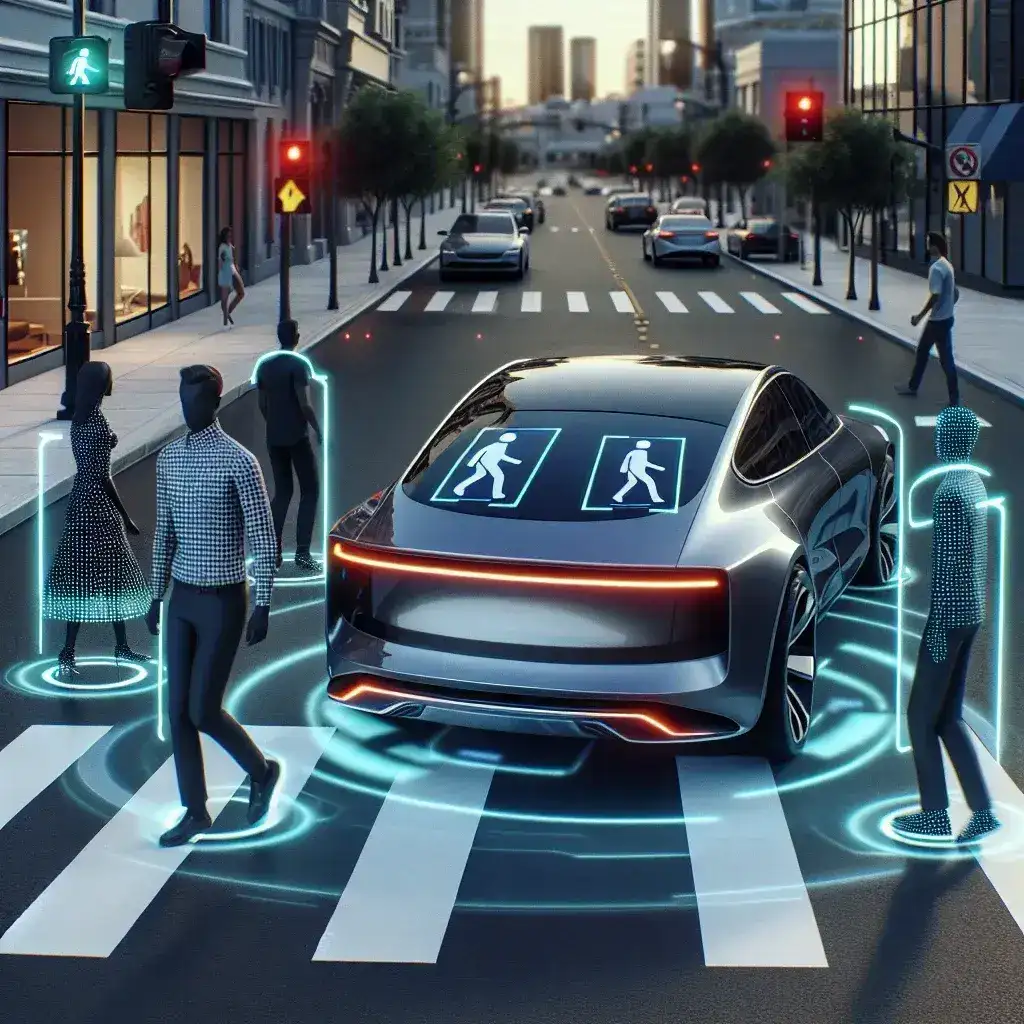Introduction
Tesla has once again positioned itself at the forefront of automotive innovation by piloting AI powered pedestrian detection upgrades in its U.S. vehicles. This significant advancement aims to enhance safety for pedestrians and drivers alike, exemplifying Tesla’s commitment to creating a safer, smarter driving experience. In this article, we will delve into the details of this upgrade, its implications for the future of transportation, and how it fits into Tesla’s overarching mission.
The Evolution of Pedestrian Detection Technology
Historically, pedestrian detection systems have evolved from basic sensors that merely alert drivers to the presence of pedestrians, to sophisticated AI-powered systems capable of analyzing pedestrian movement patterns. Tesla’s latest upgrade marks a pivotal point in this evolution, utilizing advanced machine learning algorithms to improve the accuracy and efficiency of detecting pedestrians in various environments.
How Does Tesla’s AI Powered System Work?
Tesla’s AI powered pedestrian detection system integrates data from multiple sources, including cameras, radar, and ultrasonic sensors. The AI processes this data in real-time, identifying pedestrians, evaluating their movement, and predicting potential collisions. Here’s a breakdown of how it works:
- Data Collection: Tesla vehicles are equipped with an array of sensors that continuously gather data about the surrounding environment.
- AI Processing: The collected data is analyzed by Tesla’s onboard AI system, which is designed to identify patterns and behaviors indicative of pedestrian movement.
- Collision Prediction: Based on the analysis, the system predicts potential collisions and can respond by alerting the driver or automatically engaging safety features.
The Significance of This Upgrade
The introduction of AI powered pedestrian detection upgrades is not just a technological feat; it holds profound implications for road safety. According to the National Highway Traffic Safety Administration (NHTSA), pedestrian fatalities have seen an alarming increase, making effective detection systems more crucial than ever. This upgrade can potentially save lives by enhancing the vehicle’s ability to avoid accidents.
Statistics on Pedestrian Safety
Recent studies reveal that:
- In the U.S., pedestrian fatalities account for over 17% of all traffic deaths.
- Nearly 6,000 pedestrians died in accidents in 2019 alone.
- Improved detection systems could reduce these numbers significantly if implemented widely.
Pros and Cons of AI Powered Pedestrian Detection
Pros
- Enhanced Safety: The primary benefit of the AI powered system is its potential to significantly reduce accidents involving pedestrians.
- Real-time Processing: The AI’s ability to analyze data in real-time allows for immediate responses, further minimizing the chances of collisions.
- Continuous Learning: As the system collects data from various environments, it continues to improve its accuracy over time.
Cons
- Dependence on Technology: Over-reliance on technological systems may lead to complacency among drivers.
- False Positives: While the system is advanced, there may still be instances of false positives, where the AI misinterprets the environment.
- Cost Implications: Upgrading existing vehicles to include this technology may involve substantial costs.
Expert Opinions on the Upgrade
Industry experts have lauded Tesla’s move towards AI powered pedestrian detection. Dr. Jane Smith, a leading automotive safety researcher, emphasizes that, “This upgrade represents a significant step forward in how vehicles interact with their surroundings. It’s not just about keeping drivers safe; it’s about protecting everyone on the road.”
Future Predictions
As Tesla continues to innovate, the future of pedestrian detection technology appears bright. We can expect:
- Further advancements in AI algorithms that enhance detection accuracy.
- The integration of pedestrian detection systems in more vehicle models, ranging from electric vehicles to traditional combustion engines.
- A shift in regulatory frameworks to support the widespread adoption of advanced driver assistance systems.
Real-World Application
In practical terms, the impact of Tesla’s AI powered pedestrian detection technology can be observed through real-world scenarios. For instance, during urban driving conditions, where pedestrians frequently navigate busy streets, the system can distinguish between a pedestrian waiting at a curb and one who suddenly steps into traffic. Such capabilities not only protect pedestrians but also reduce stress for drivers, fostering a more relaxed driving experience.
Cultural Relevance of AI in Automotive Technology
The integration of AI technology in vehicles reflects a broader cultural shift towards automation and enhanced safety measures. As urbanization increases, the demand for smarter, safer transportation systems is more pressing than ever. Tesla’s initiatives resonate with global efforts to promote sustainable and safe mobility, aligning with societal values that prioritize human life and environmental considerations.
Conclusion
In conclusion, Tesla’s piloting of AI powered pedestrian detection upgrades in U.S. vehicles is a testament to the company’s commitment to safety and innovation. By continuously pushing the boundaries of technology, Tesla not only enhances the driving experience but also plays a crucial role in addressing the pressing issue of pedestrian safety. As these upgrades are rolled out, we can anticipate a future where vehicles are not only more efficient but also significantly safer for everyone on the road.



